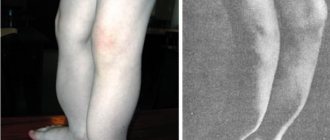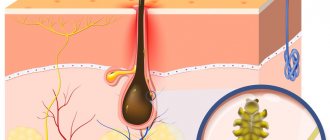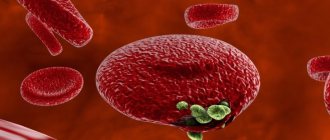Aspergillosis - symptoms in humans, diagnosis and treatment
Aspergillosis is a disease that is caused by fungi of the Aspergillus family and is characterized by damage to various organs and systems of the body, but the bronchopulmonary system most often suffers.
The disease is usually chronic with various allergic reactions or toxic manifestations. The causative agent of aspergillosis is quite widespread in the environment - they are present in the ground, in water, and in the air, and can multiply in the human body and in animals.
Due to the fact that the respiratory system takes the first blow, the main symptoms of aspergillosis begin to appear in the respiratory system. Sometimes the fungus enters the body with blood and lymph, quickly spreading to all organs. This type of disease is characterized by a high mortality rate - about 80%.
Causes of aspergillosis
The causative agents of the disease belong to the genus Aspergillus, and in human pathology, A. Flavus and A. Niger are of greatest importance, but other species may also occur, for example, A. Nidulans or A. Fumigatus. We can say that morphologically, these types of fungi consist of the same type of mycelium, having a width of 4-6 microns. Aspergilli, as a rule, have quite high biochemical activity, due to which they can form various enzymes.
The causative agents of pulmonary aspergillosis are widespread in nature. They are most often found in hay, flour, soil and grain, as well as dust. The pathogen usually enters the body with dust through the air. By aerogenous route it reaches the mucous membranes located on the upper respiratory tract. It is quite possible to become infected through the skin, which is often changed by another pathological process.
A decrease in the body's immune defense plays a leading role in the development of aspergillosis. This disease can be complicated by various pathological processes of the skin, internal organs and mucous membranes.
Description of appearance
Externally, upon microscopic examination, fungi of the genus Aspergillus are mushrooms consisting of the same type of mycelium, 4–6 micrometers wide, on which “heads” with conidia are sometimes present.
A specific bacteriological nutrient medium for growing colonies of fungi of this genus is the so-called Sabouraud medium. On it, mushrooms form flat colonies, at first white, slightly fluffy, which subsequently take on bluish, yellowish, brown and other colors depending on the species. Their surface becomes powdery.
Classification
Aspergillosis differs in the localization of its pathological processes:
- bronchopulmonary (including pulmonary aspergillosis);
- aspergillosis of ENT organs;
- aspergillosis of the skin, eyes and bones;
- septic, or generalized aspergillosis.
Depending on the route of infection by fungi, several types of aspergillosis are distinguished:
- endogenous (autoinfection);
- exogenous (airborne or alimentary transmission);
- transplacental (vertical route of infection);
According to statistics, approximately 90 percent of all cases of aspergillosis occur due to primary infection of the respiratory tract, as well as the lungs. About five percent are due to infection of the paranasal sinuses. In addition, involvement of other human organs in the pathological process is diagnosed in almost five percent of people susceptible to infection.
Habitats, distribution conditions, use in production
Representatives of this genus of fungi live mainly in soil, on plants, on rotting vegetable debris, in house dust, building materials, fabric, leather, textiles and on food products such as cheeses and canned meats.
Spores of fungi of this genus are present in the air almost constantly: every day each of us inhales about several hundred spores, which do not cause any diseases in a person with a normal immune system. And sometimes fungi of the genus Aspergillus can be found in the oropharynx of a healthy person.
As already described above, fungal spores can be present in indoor air, including in the air of hospitals, which can become a risk factor for nosocomial infection of an inpatient with a weakened immune system.
A number of representatives of fungi are used in industry to obtain organic acids, antibiotics, vitamins, enzymes, and for the industrial production of certain food products.
Pulmonary aspergillosis
Pulmonary aspergillosis is a very serious diagnosis. Since, due to the development of the disease caused by the mold fungi Aspergillus, aspergillomas begin to form in the human lungs, that is, tumor-like formations that consist of tightly woven fungi. There are also complications such as endocarditis, aspergillus pleurisy, otitis, meningoencephalitis and others.
However, at any time, aspergilloma can cause a serious complication - pulmonary hemorrhage, which can be massive and profuse. And in this case, there is no alternative to surgical treatment. Treatment of aspergillosis with conservative methods is possible when the mucous membranes or skin are damaged by the fungus.
It is possible to defeat parasites!
Antiparasitic Complex® - Reliable and safe removal of parasites in 21 days!
- The composition includes only natural ingredients;
- Does not cause side effects;
- Absolutely safe;
- Protects the liver, heart, lungs, stomach, skin from parasites;
- Removes waste products of parasites from the body.
- Effectively destroys most types of helminths in 21 days.
There is now a preferential program for free packaging. Read expert opinion.
Read further:
Fungi parasites of plants: representatives, life cycle of development
Pathogenic fungal spores: detection and destruction on nails
Allergic bronchopulmonary aspergillosis: symptoms and treatment methods
Fungi parasites of cereal plants: representatives, life cycle
Fungi parasites of humans: representatives, life cycle of development
Fungi parasites of animals: representatives, life cycle of development
Symptoms of aspergillosis in humans
Since the respiratory system takes the first blow, the main symptoms of aspergillosis in humans begin to appear precisely from the respiratory system. In a third of cases, the fungus enters the body through the blood and lymph flow and spreads to all organs. This type of aspergillosis has a high mortality rate of about eighty percent. The rarest is cutaneous aspergillosis.
If the fungus has settled on the surface and has not penetrated the mucous membrane, as happens with tracheobronchitis or aspergilloma, then patients note the following symptoms: chronic cough with sputum, sometimes with blood during a strained cough. Most often in such cases there are pathologies of the lungs.
In response to the penetration of spores into the body, human tissues develop certain inflammatory reactions. The most common two types of inflammation are serous-desquamative and fibrous-purulent. With serous-desquamative inflammation, aspergillus causes exfoliation of the epithelium, membranes of the stomach, and lungs with the release of exudate (plasma with blood elements). In the second type - fibropurulent - aspergillus causes the release of exudate with fibrin (clotted blood protein) and a purulent component. The most severe reaction to aspergillosis is the formation of granulomas in the lungs.
Otherwise, aspergillosis gives an acute picture - a dense infiltrate forms in the lungs, which disintegrates. With the blood flow, infection of other organs occurs. At the onset of acute aspergillosis, the phenomenon of neutropenia is characteristic, which is expressed in sudden weakness, nosebleeds, fever, sudden chills, severe sweating, tachycardia, and a sharp decrease in pressure. In this case, a decrease in neutrophils is detected in the blood, which makes it difficult for the body to give an inflammatory response to the focus of aspergillosis. Therefore, with neutropenia, it is often not possible to diagnose aspergillosis - all indicators would seem to be normal. However, doctors know from experience that this may signal the onset of aspergillosis, so additional studies are prescribed. Most often, aspergillus settles in the sinuses. In this case, red lesions appear; after the tissue disintegrates, they lose their color and then turn black. This process is very rapid - it usually spreads to the eye sockets, facial tissues, and towards the brain. Typical symptoms in this condition are congestion, pain in the nasopharynx, sinuses, swelling of the mucous membrane. The sinuses are filled with pus, but they do not rupture.
Allergic aspergillosis is often associated with bronchial asthma. In this case, patients note asthmatic attacks, increased eosinophils in the blood, dark areas on x-ray, and the presence of antibodies in the serum (galactoman). To clarify the diagnosis, a sputum analysis is taken. In more than half of patients, aspergillus is detected during culture. In this case, a secondary culture is done to clarify the diagnosis (since conidia could have been accidentally introduced).
Clinical significance
A peculiarity of this genus of fungi is the ability to cause not only allergic diseases, but also infectious lesions.
In terms of the frequency of development of specific infectious diseases, fungi of the genus Aspergillus occupy second place after yeast-like fungi of the genus Candida.
Predisposing factors to the development of Aspergillus infections are immunodeficiencies, including secondary immunodeficiencies caused by taking high doses of systemic glucocorticosteroids, for which the cellular and molecular mechanisms of increased vulnerability of organs and tissues to fungal spores have been studied, as well as chronic pulmonary diseases.
Aspergillus can affect any organs and tissues.
Clinical manifestations include the following forms:
- bronchopulmonary aspergillosis and its varieties: infectious-allergic bronchopulmonary aspergillosis, purulent bronchitis, chronic aspergilloma, invasive pulmonary aspergillosis, chronic necrotizing pulmonary aspergillosis;
- generalized (septic) aspergillosis, which occurs in immunocompromised people (for example, HIV infection) and has a high incidence of deaths;
- aspergillosis of ENT organs: external and media otitis, rhinosinusitis, aspergillosis of the larynx;
- aspergillosis of the eye;
- skin aspergillosis in the form of erythematous scales and papules, in more severe cases – necrotic lesions of subcutaneous fatty tissue;
- bone aspergillosis;
- other forms of aspergillosis (damage to the mucous membranes of the mouth, genitals, mycotoxicosis).
The most common respiratory lesions occur against the background of chronic lung diseases:
- bronchial asthma, cystic fibrosis - for allergic bronchopulmonary aspergillosis;
- pre-existing cavities in the lungs (tuberculous cavities, cavities in patients with sarcoidosis or other diseases resulting from the formation of cavities) - for aspergilloma;
- chronic obstructive pulmonary disease during its treatment with glucocorticosteroids – for necrotizing pulmonary aspergillosis.
Risk factors for the occurrence of invasive pulmonary aspergillosis, in addition to those listed above, are secondary immunodeficiency states due to cancer, treatment with immunosuppressants, HIV infection, decompensated diabetes mellitus, massive treatment with antibiotics and other factors.
However, people with normal immune systems can also develop respiratory infections caused by Aspergillus fungi due to increased exposure to Aspergillus spores.
Massive inhalation of the spores of these fungi in healthy people can cause acute pneumonia, which usually resolves on its own.
Occupational risk factors for chronic diseases caused by spores of fungi of the genus Aspergillus are work in agriculture, weaving factories and paper spinning mills.
Allergic diseases associated with sensitization to mold allergens are widespread. These are primarily typical atopic diseases with fungal sensitization: year-round allergic rhinitis and bronchial asthma.
Much less often, exogenous allergic alveolitis can occur (see more in the corresponding section of the article “Mushroom Alternaria alternata: description and clinical significance”).
For fungi of the genus Aspergillus, this disease is called “malt workers’ lung” due to the high frequency of occupationally caused cases of diseases in these workers.
Also, some representatives of fungi of this genus can secrete toxic substances - aflatoxin, ochratoxin and sterigmatocystin, which, with chronic exposure, cause manifestations of mycotoxicosis - toxic hepatitis, kidney disease and even malignant tumors. However, the main feature of fungi of the genus Aspergillus, which distinguishes them from representatives of other genera of molds, is the ability to cause specific infectious diseases.
Diagnostics
Aspergillosis in adults requires a thorough and comprehensive diagnosis, which, first of all, is necessary to identify the type and severity of such a disease.
The first stage of establishing the correct diagnosis is carried out by the clinician to whom the person contacted, based on the predominant symptom. The doctor needs:
- get acquainted with the medical history and life history of the patient - this may indicate some etiological factors;
- conduct a detailed survey of the patient to find out the first time of onset and the degree of intensity of symptom expression. This will enable the clinician to determine the severity of the disease;
- perform a thorough physical examination, which, depending on the situation, may include an ophthalmological examination of the eyes, palpation of the anterior wall of the abdominal cavity, examination of the condition of the skin and nail plates, and listening to the lungs using a phonendoscope.
Instrumental diagnosis of aspergillosis includes:
- chest x-ray;
- biopsies;
- bronchoscopy;
- spirometry;
- CT.
Laboratory tests will also vary depending on the nature of the infection. In most cases, these include:
- study of discharge from the sinuses or external auditory canal;
- microscopic examination of feces;
- general blood test - may indicate the occurrence of an allergic or inflammatory process;
- analysis of sputum produced when coughing - to identify Aspergillus particles;
- blood biochemistry;
- scraping from the skin or nail plates;
- imprint from the surface of the cornea;
- PCR.
Such activities will help not only make the correct diagnosis, but also carry out a differential diagnosis of such a disease.
Treatment of aspergillosis
Regardless of the type of aspergillosis in a person, treatment is a very labor-intensive task. Chemotherapy and antibacterial agents do not lead to the expected effect, as indeed do all other methods of combating infectious diseases known to doctors.
For this reason, in recent years, when aspergillosis is diagnosed, treatment is based on the use of surgical methods. Patients undergo a lobectomy with resection of the affected organs. If the operation was performed by a competent specialist in compliance with all established procedures, the intervention is tolerated without complications and gives a good prognosis for the future.
For advanced forms of pulmonary aspergillosis, surgical treatment is used in conjunction with conservative methods. Patients with aspergillosis are prescribed amphotericin B, oxacillin, nystatin, erythromycin, and tetracycline antibiotics. At the same time, the person takes vitamins. Also, for patients with aspergillosis, restorative treatment is recommended.
When using antifungal drugs, the amount of antibodies in the blood increases sharply, but by the end of treatment it returns to normal. If pulmonary aspergillosis leads to lesions of the skin and mucous membranes, patients are recommended to take antifungal and anti-inflammatory drugs.
Prognosis and prevention
The most favorable course is observed with aspergillosis of the skin and mucous membranes. The mortality rate from pulmonary forms of mycosis is 20-35%, and in people with immunodeficiency - up to 50%. The septic form of aspergillosis has a poor prognosis.
Measures to prevent infection with aspergillosis include measures to improve sanitary and hygienic conditions: combating dust in production, wearing personal protective equipment (respirators) by workers in mills, granaries, vegetable stores, weaving enterprises, improving ventilation of workshops and warehouses, regular mycological examination of persons from risk groups.










